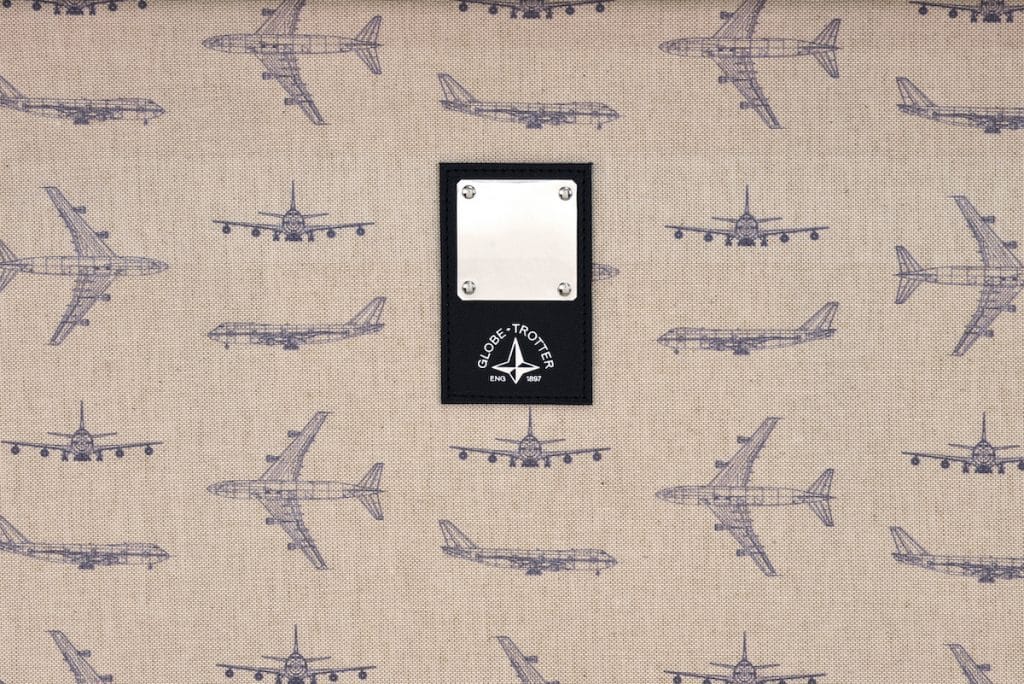Following the retirement of the British Airways 747, Globe-Trotter is proud to announce an exclusive suitcase collection to commemorate this great British icon of aeronautical design.
Discover the unique secret held in our latest limited edition suitcase, as well as the fascinating story of the Queen of the Skies.
Wheeling a Globe Trotter suitcase through the airport and carrying it onto a plane is always a memorable step of a journey. But never has Globe-Trotter’s long-standing connection to air travel been as tangible as it is in this brand-new collaboration with British Airways.
Following the bittersweet news of the iconic 747’s recent retirement, we are proud to announce an exclusive limited-edition BOAC ‘Speedbird’ Carry-On Suitcase designed to celebrate and commemorate this icon of aviation.

Made to order and limited to just 150 cases globally, the new Globe-Trotter x British Airways Suitcase is painted in the retro pearl and navy colourways of the BOAC livery (British Overseas Airways Corporation, the predecessor to British Airways) — complete with the stylish Gold Speedbird logo. Incredibly, it also features a small piece of the body of a 747 – the first aircraft to be called a “jumbo jet” – on the inside of the lid where the Globe-Trotter metal plaque usually sits.

The 747 changed the face of aviation forever. It wasn't just its size – although that was what initially drew crowds everywhere it landed from day one of its first commercial flight in January 1970 – nor its technological complexity. It was the experience of flying aboard the 747 that guaranteed its place in the pantheon of great passenger planes.

The jumbo was the first of the wide-bodied jets, the archetypal ‘big ol’ jetliner’, to quote the 1977 Steve Miller Band song; but its future looked dubious even when the RA001 prototype rolled out of the hangar in September 1968. As his career's swansong, the swashbuckling Juan Trippe, the scion of Pan Am, had ordered 25 of a plane 2.5 times bigger than any other and capable of carrying 400 plus passengers. Other airlines (including BOAC) collectively ordered another 25. Boeing gave the team just 28 months to produce this behemoth… then starved them of funds and personnel.
Why? Because Boeing thought the 747 was the last knockings of the past. The future was Concorde and Boeing’s own 2707 SST (Supersonic Transport) project. However, the 747 was worth building because the world would still need freight moved at conventional speeds. So the engineers were told to make sure they created a cargo version. Which, by serendipity, led to the 747's defining design feature: the hump.

The team decided that the easiest way to load freight was to hinge the nose so it gaped open. But where to put the crew? The answer was in a bubble on top of the aircraft, 34 feet above the ground, which initially caused some trepidation among pilots. In order to make the plane more streamlined, the engineers extended the cockpit profile along the top of the fuselage, creating a partial double-decker. This gave room for extra seats and that other unique feature, the spiral staircase from the main deck to the upper section. And now the 747 had its distinctive, and oddly affecting, silhouette.
The supersonic threat receded, of course, killed by worries about noise and pollution. And if Concorde was an America's Cup yacht — sleek and cutting edge, but cramped and excessively expensive — then the 747, with its three or four passenger classes, was like one of the luxury ocean liners of old. When BA used the phrase "Queen of the Skies" to describe the jumbo, it might well have been thinking of the great Cunards, the Queens Mary and Elizabeth. Like those ships, it felt secure and safe and its heft meant it offered a very smooth flight. If Concorde was futuristically elegant, the word for the 747 was "majestic". Plus, the jumbo had another important advantage: price.
Its capacious, twin-aisle, 10-abreast configuration in economy meant that fares could be slashed and operators still made money. A return to New York was suddenly less than a hundred pounds. Within six months of its inauguration, it had passed the one million passengers-flown mark (it is now up to four billion). Despite the on-board class system, it was seen as egalitarian — opening up flying in style and comfort to the masses.

Now, however, after 51 years the 747 has come to the end of the line. To celebrate its 100-year anniversary in 2019, British Airways painted one of its fleet of jumbos in the vintage BOAC livery. That plane made its last flight, the last ever by a British Airways 747, on 11 December last year, from Cardiff Airport to St Athan in the Vale of Glamorgan. In honour of this momentous final journey, it was given the special flight number for the trip of BA747.
“Despite the on-board class system, it was seen as egalitarian – opening up flying in style and comfort to the masses”
Following its retirement, you won't be able to spot a 747 in British Airways livery, neither vintage nor modern, any longer. But the 150 people lucky enough to own one of our limited-edition cases will be carrying a memento of BA and the 747 heritage with them; a reminder of when this big, friendly giant ruled the skies and stole our travelling hearts.

Newsletter Signup
Sign up for our exclusive newsletter to unlock insider access, travel inspiration, VIP events, and expert tips.



